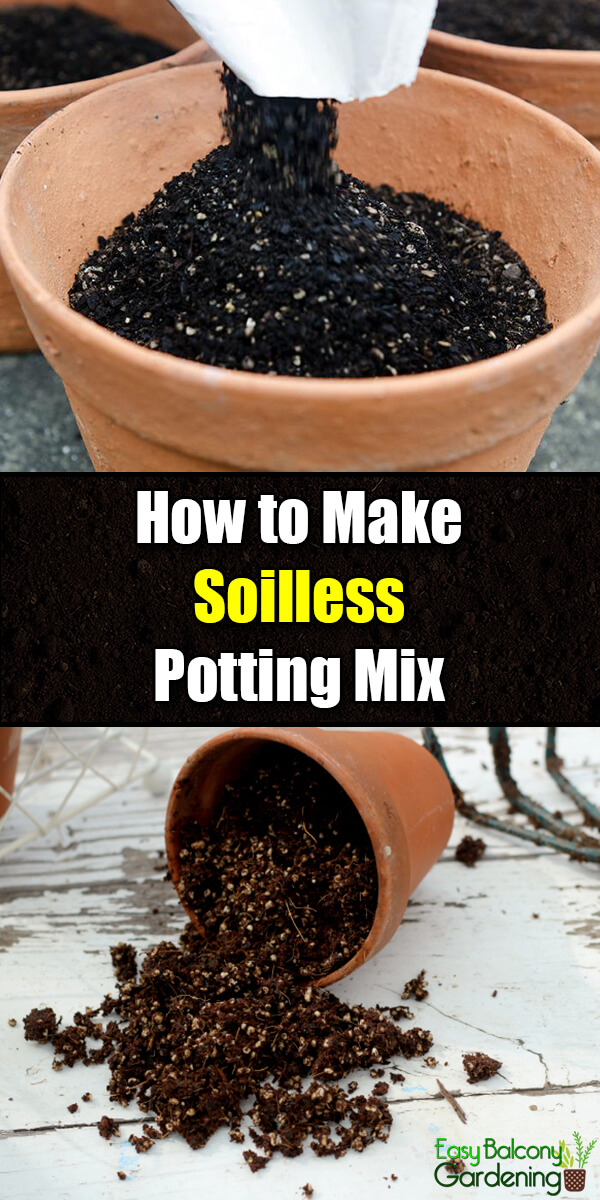A soilless potting mix comes with two major advantages for your garden. First, unlike garden soil, where you may have disease spores, insect eggs, weed seeds, etc., you know exactly what you have. Second, you do not have to worry about drainage problems when using a soilless potting mix. Fertilizing, however, is completely up to you.
Qualities of a Good Soilless Potting Mix
- With soilless potting mix, water drains freely from the drainage holes
- Air fills the spaces in the large pores of your soilless potting mix after excess water has drained
- Sufficient moisture is retained in the smaller pores of the soilless potting mix
Qualities of a Bad Soilless Potting Mix
- Slow water drainage indicates a bad soilless potting mix
- The soilless potting mix is waterlogged and heavy
- Some algae or salt accumulation may form on top of the soilless potting mix
Ingredients
- Sphagnum – usually called peat moss, is an excellent ingredient for a soilless potting mix. It has cells that retain both water and air. When conditions are drier, the cells retain water. When conditions are wetter, the spaces have air, which aids in converting carbon dioxide into organic compounds. Sphagnum peat is lightweight and an inexpensive ingredient for your soilless potting mix.
- Bark – an additive for soilless potting mix that improves air space and drainage and prevents compaction. Bark is better used for established plants than for starting seeds. Composted pine bark is one that is commonly utilized in commercial media
- Coir –coconut hulls derivative. May be used as a replacement ingredient for your soilless potting mix when peat is not available. Coir also reduces the quantity of peat moss required in the soilless potting mix.
- Perlite – a volcanic mineral that supplements air and water retention capacity of the soilless potting mix. For ground gardens, it does not do anything to alter the pH quality of a mix, but it can put a check on sandy soil from leaching nutrients.
- Vermiculite – needs heating up and expanding to increase its moisture holding capacity. It compacts easily. It is a good choice to cover seeds to help maintain consistent moisture for germination. When making your own soilless potting mix, do not use vermiculite designed for plaster or insulation. They do not absorb moisture well.
Steps to Follow
- Basic soilless potting mix – for every six parts of Sphagnum peat moss, add one part perlite and one part vermiculite. You can also substitute sharp sand for perlite. Include half a tablespoon of dolomitic lime for each quart of mix.
- Basic soilless potting mix with compost – for every four parts of Sphagnum peat moss, mix two parts compost, one part perlite, and one part vermiculite
- Basic soilless potting mix with additives – for every four gallons of soilless potting mix, add:
- one-fourth cup of nitrogen. E.g., bone meal, dried kelp powder, etc.,
- one-fourth cop of calcium and magnesium to raise soil pH. E.g., limestone, dolomite
- one-fourth cup phosphorus – bone meal.
Soilless Potting Mix Requirement for Effective Container Gardening
- Constant reserve of nutrients and moisture
- Sufficient looseness, as opposed to compacted garden soil, to enhance root development and trading of gases in the root zone
- Appropriate measure of acidity and alkalinity to meet pH requirement
- Free of toxins, weed seeds, soil-borne diseases, insect eggs, etc.
- Adequate support for plant root and its overall weight to prevent the plant from tipping over
Points to Remember
- Moisten the soilless potting mix lightly before filling your containers
- Do not overpack the container with the soilless potting mix
- Irrigate thoroughly the containers after planting
- If you did not use a slow-release fertilizer at planting time, feed your pots two weeks after planting
Remember once again: with a soilless potting mix, fertilizing is required!







